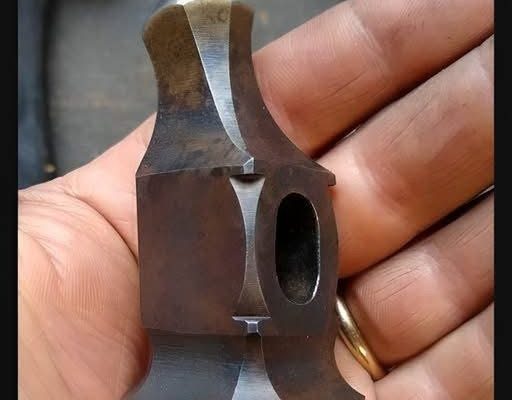Ever Held a Tool That Feels Like It Holds Centuries of Secrets?
If you’ve ever come across a vintage chasing hammer head, then you’ve touched more than metal—you’ve held a legacy. Compact, unassuming, and quietly powerful, this humble tool was once the crown jewel in every artisan’s collection. And its influence? Still felt today.
What Is a Chasing Hammer—and Why Did Artists Love It?
Forget the brute strength of a carpenter’s hammer. The chasing hammer is a tool of precision, balance, and artistry. With one flat (sometimes slightly domed) face and one ball-shaped end, this tool wasn’t about force—it was about finesse.
- The rounded side? Perfect for shaping and adding texture.
- The flat side? Used to smooth, stretch, and refine delicate metal surfaces.
More than a hammer, it was a metalworker’s brush—used to “paint” in silver, gold, and copper. Every strike mattered. Every mark told a story.
Why It Was an Essential Tool for Master Craftsmen
Soft metals demand control, not muscle. The chasing hammer gave artisans the ability to finesse a curve, a ridge, or a pattern—applying just enough pressure to shape without breaking.
Each tap was intentional. Too soft, and the detail vanished. Too hard, and the piece was destroyed. Using one wasn’t just skilled work—it was a performance. It required rhythm, patience, and years of refinement.
A Tool That’s Traveled Through Time
This isn’t just a tool—it’s a time traveler.
- Ancient Egypt & Mesopotamia: Used in repoussé to craft intricate jewelry and sacred relics.
- Medieval Europe: Essential for goldsmiths, armorers, and religious metalwork.
- Industrial Age: Even when machines took over, the chasing hammer stayed—because machines couldn’t match the soul in handmade detail.
Fun Fact: The copper skin of the Statue of Liberty? It was shaped using chasing and repoussé techniques—with tools just like this.
Craftsmanship That Left a Mark—Literally
From Renaissance armor to ceremonial weapons and heirloom jewelry, chasing hammers helped shape history—one strike at a time. They didn’t just forge metal. They forged meaning.
Why It Still Matters Today
In a digital, mass-produced world, artisans still reach for the chasing hammer. Why?
Because some things—like detail, touch, and soul—can’t be programmed. This tool connects modern hands to ancient traditions. It reminds us that craftsmanship is timeless.

Balanced. Timeless. Alive with History.
There’s something different about a vintage chasing hammer.
It’s perfectly weighted, effortlessly balanced—crafted not just for utility, but for harmony in the hand.
More than a tool, it carries a soul.
The kind of soul that new tools, no matter how shiny, simply don’t have.
Each one connects its holder to a lineage of creators—centuries of hands that shaped, smoothed, detailed, and refined.
Treasured by Collectors. Revered by Artists. Preserved by Museums.
These hammers aren’t just tools; they’re relics.
They embody the truth that real beauty doesn’t come fast—it comes through patience, skill, and a passion for the process.
A Symbol of Mastery. A Testament to Legacy.
Every vintage chasing hammer head tells its own quiet story.
The patina. The nicks. The worn curves. Each mark a memory of someone who once gave it purpose.
And when a modern maker picks one up, that purpose lives on.
A timeless rhythm begins again—stroke by stroke, echoing through history.
Do You Recognize This Classic Tool?
If you do, you’re not just seeing a hammer.
You’re holding a legacy—an unbroken chain of craftsmanship that spans generations.
Whether you’re an artisan, a collector, or simply someone who honors the handmade, the chasing hammer stands as proof:
True tools never lose their magic.



